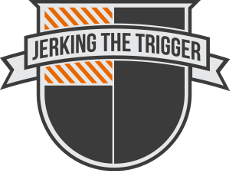To my knowledge, none of my AKs have ever digested a single piece of brass cased ammo… until recently. The folks at BulkAmmo.com offered to send me some Fiocchi 7.62×39 123 gr. FMJ for testing and I jumped at the chance.
This Fiocchi 7.62×39 123 gr. FMJ features boxer primed brass cases. The boxes are marked “Made in Hungary.” I was given 2 boxes that contained 20 rounds each which isn’t a lot of ammo for a test but I was able to form some immediate opinions.
My first impression was that the ammo looked much, much nicer than the typical AK fodder that I shoot. The cartridges were clean and seemed to be consistent in overall length (not always the case with some 7.62×39).
When shooting, my impression was that it seemed a bit hotter (sharper recoil) than some of the steel cased ammo that I typically shoot. This was also seen when I checked the targets since the Fiocchi ammo’s point of impact (POI) was higher than that of the typical steel cased ammo that I shoot. I am actually very pleased that this is the case since much of the steel cased ammo on the market is under-loaded. There were no signs of over pressure.
The ammo was also noticeably more accurate than what I typically shoot. In the target picture above, there are two groups. The photo above shows two distinct groups. The lower 8 shots were shot relatively quickly from a rest at 50 yards. Accuracy was good save for the two pulled shots at 3 and 4 o’clock. I made some adjustments, slowed down, and fired a final 3 shot group (I generally prefer 5, or better yet, 10 shot groups, but I was out of ammo). Those are the 3 shots that you see around the bull. The rifle used was a converted Saiga with an Aimpoint H1 mounted on an Ultimak rail. This rifle shoots well with good ammo and the Fiocchi proved to be good ammo.
It looks nice and it shoots well, but I was probably most struck by how clean it was. This ammo is not nearly as smoky as much of the steel cased 7.62×39 that is on the market. It also doesn’t smell as bad. Steel cased ammo often smells terrible, almost like cat urine, when it is being shot but the Fiocchi smells normal. With the lack of smoke and smell, it should come as no surprise that this ammo shot much cleaner than steel cased ammo. There was very little clean up to be done after 40 rounds of the Fiocchi versus 40 rounds of steel cased ammo – granted, it was just 40 rounds but the difference was noticeable.
40 rounds is a small sample size with which to form an opinion on the quality of ammo, but the hallmarks of quality are there. This Fiocchi 7.62×39 ammo is clean and consistent externally, it features boxer primed brass cases, it shoots accurately, and doesn’t leave a mess. It is definitely a very different and much better experience than what I am used to with the typical steel cased ammo on the market.
You can check out this Fiocchi 7.62×39 and other 7.62×39 Ammo at BulkAmmo.com.
Disclosure: This ammo was sent to me by BulkAmmo.com, free of charge, for review.









